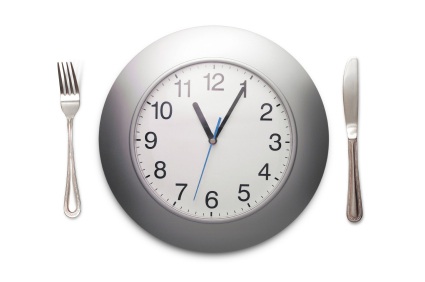
The game of American football is incredibly well established and carries a systematic approach from once you’re a prospect in high school right up to the NFL. There are ideal run times, height and weight measures, limb lengths, strength minimums, game statistics and everything else you can think of. Coaches and scouts have football down to an absolute science, but with one glaring downfall.
Almost none of these coaches or athletes focus on the proper application of sports science nutrition towards maximizing performance.
They typically tell their team the standard old school coach things, such as:
“Make sure you eat some meat today”
“Have some Gatorade while you train”
“Drink 8 glasses of water today”
“Get a post-workout protein shake in”
These are standard guidelines for average results, not optimal results. Being a nutrition specialist, it blows me away that a sport as highly funded and as systematic as football still has a huge gap between the nutrition guidelines coaches give compared to what we now understand within the scientific literature.
Something that is very important to understand is that you don’t actually build strength, muscle mass, endurance or power right there on the spot in the gym. It doesn’t work like that.
Training itself is a stimulus. When you go to the gym and train with the proper volume, intensity and frequency that it takes to build muscle mass, you are simply creating the stimulus for growth and not the actual growth itself.
For example, if you go to the gym and do 10 sets of 10 on the squat, your body is going to go “Holy crap, we just went through a grueling resistance training session. I’m going to kick on the intracellular signalling process responsible for building more muscle so I can be better prepared next time”
That’s how progress works: Stimulus → Recover → Adapt.
Understanding this, you absolutely have to have your nutrition in check if becoming a better football player is in the cards for you.
Why?
Because the entire recovery and adaptation process is happening outside of the gym. Meaning, you create the stimulus for progress in the gym, but whether or not you are able to actually make that progress depends on how well– or how poorly– you decide to eat and sleep.
Muscle cannot be created out of thin air; it needs the proper amount of calories and building blocks present to act as raw materials for the building process. In a similar vein, you cannot recover just from lying down. You need to replace not only the calories you lost through physical movement, but also enough to support the recovery and adaptation process.
Whether or not you are able to actually make progress depends on how well– or how poorly– you decide to eat and sleep.
tweet thisThe football players that are doing everything right in the gym and on the field are still only realizing a fraction of their potential. It isn’t until they give as much attention to their nutrition as they do their training that they can perform at 100% of their capabilities.
I have never had a client go from an average athletic diet to a high performance diet without reporting positive feedback. The body requires optimal fuel if you want it to supply optimal performance.
Without further ado, here are the three most important nutritional principles you have to utilize this offseason:
Football nutrition principle #1: caloric intake is king
The amount of calories you take in per day is the most powerful weapon you have at your disposal in order to make changes in fat loss and muscle gain. I know some of you readers out there may have seen articles on your social media newsfeeds with titles such as:
“Calories don’t matter”
“Eat whatever you want and still get lean!”
“Calories don’t matter so long as you eat the right foods”
This is all nonsense and goes against decades of scientific literature. Energy balance (calories in vs. calories out) is the undisputed king of body weight regulation.
Why is this important for you guys?
Well, the most advantageous time for any football athlete to make drastic changes to their physique is during the offseason. Whether this be muscle gain or fat loss, calories have to be considered.
There are only three possible states of energy balance that you can be in, and these are:
- Hypocaloric state: This is a situation where the calories in are less than the calories out, resulting in weight loss. This state is typically characterized by somebody who needs to drop a little bit of body fat in order to improve performance, speed, health or body composition. This must be done carefully to avoid performance sacrifices or muscle loss.
- Maintenance: The calories consumed in this situation are equal to the calories out, resulting in neither weight gain nor loss. I normally see people in this state when they are at a plateau in their body composition goals. Some people feel like they’re doing everything right and can’t seem to drop body fat; other people feel that they “eat all the time” and can’t seem to gain any body weight. I hate to be the bearer of bad news, but if your body weight has been stuck at a certain number for a month or two now the odds are quite high you’re hanging out at maintenance and you need to make some changes.
- Hypercaloric state: This is a term represents a situation where the calories in are greater than the calories out, resulting in weight gain. This state is typically characterized by the athlete who is looking to gain some body weight to improve performance or increase muscle mass. This must be done carefully to avoid sacrificing nutrient partitioning and gaining unnecessary body fat.
I listed calories as the #1 principles because you don’t want to fall into the trap of what I call “majoring in the minors.” What I mean is that you’re giving too much focus towards a component of sports nutrition that isn’t very impactful and not enough focus on a component that is incredibly impactful.
The typical example here are athletes who are really into supplementation but have no idea how many calories they eat per day.
The three states of energy balance are derived from the laws of thermodynamics. These are rules of physics that apply to any and all things in the universe. This isn’t me trying to create anything new. I bring these states up again because if you are really motivated to make big changes this offseason, you need to understand that calories are your most impactful component towards making changes.
For the sake of clarity, let’s say you wanted to lose some weight. You could be on the world’s best training plan, taking the world’s best supplements and timing all your meals and all your supplements exactly how they should be timed. BUT, if you’re eating at maintenance, you’re not going to lose a pound. Like I said before, don’t major in the minors.

Football nutrition principle #2: macronutrient amounts matter
A major component of proper sports science nutrition and getting better results in football is setting your macronutrients where they need to be.
“Macronutrients” refers the separate components of your meal that actually make up your total calorie count for the day. The three main macronutrients are protein, carbohydrates and fat.
Alcohol is also considered a macronutrient, but if it’s abundant enough in your diet to be considered a main macronutrient, then you’re probably not spending much time on the football field and spending a lot more time yelling at the ref from the sidelines.
Here’s how the main three look from a caloric perspective:
Protein: 4 Calories per gram
Carbohydrates: 4 calories per gram (with the exception of fiber ranging anywhere from 1.5-2Cals)
Fat: 9 calories per gram (with the exception of MCT’s averaging 8.3 Cals)
Alcohol: 7 Calories per gram
Every macronutrient plays a key role in both health and performance. The way you set up both your calories and macronutrients can play a pivotal role in optimal function of your immune system, endocrine system, neurotransmitter balance, energy system specific sport demand, mood, energy, sleep quality, among many other things.
All of this is crucial in supporting both your short term performance and your long term career longevity.
Football players compete in a sport with mixed energy systems demands. The nature of the game requires that players have an adequate amount of carbohydrates in their diet.
From a professional cost/benefit analysis standpoint, there are so many more benefits to having lots of carbohydrates in a football diet than there are costs.
This is exactly why I don’t suggest any football player adopt a low-carb approach unless they are under very special circumstances. The average layout for optimal football performance should look like:
Protein: 0.8-1g per pound of body weight per day
Carbohydrate: 0.5-3g+ per pound of body weight per day (varies depending on energy expenditure)
Fat: Minimum 20% of set caloric intake
The details and individual manipulation of each macronutrient goes far outside the scope of this article, but I cover it in detail in my Fueling the Football Athlete Performance Nutrition Guide.
Changes can be made based on current metabolic state, the position you play and the goals you currently have. The above layout is to give you an idea on what ballpark numbers you should have.
Protein has long been a hot topic for debate, but at this point in time we can make recommendations based off of the tremendous amount of evidence from many different populations. One recommendation being that 0.8-1g per pound of body weight is more than enough protein per day to support either a lean-down or mass-up phase.
Going above and beyond this number won’t hurt you in anyway (that is unless you have pre-existing kidney issues), but it also won’t benefit you either. Additionally, by eating more protein that isn’t necessarily benefiting you, you are also displacing (by not eating) other foods that you otherwise could be receiving more benefit from, such as healthy fats and carbohydrates.
Carbohydrate intake is crucial for meeting the energy system-specific demands facing football players in the gym and on the field.
Take pre-workout carbohydrates, for example: the research clearly shows that they will help fuel the energy systems utilized in your resistance training workouts and drills on the field more efficiently.
Although this carbohydrate fuel won’t directly stimulate new muscle growth or endurance, it does so indirectly as a by-product of you being able push more weight for more reps during your training sessions and practices. This creates an overall greater muscle-building stimulus to adapt and recover from.
One very important note here is that carbohydrates are the preferred fuel source of both the nervous system and the muscular system. Getting more specific, glycogen primarily fuels the muscle cell activity and blood glucose backing up the nervous system.

You should care about this because a properly timed pre-workout meal consisting of carbohydrates can not only top-off glycogen stores but also provide additional blood glucose for the nervous system. This strategy helps delay both fatigue that is systemic (the nervous system) and local (the muscle group trained that day).
In some cases, this systemic fatigue can occur before the actual muscles you’re training fatiue. A pre-workout carbohydrate meal can help delay this kind of neural fatigue.
Pre-workout carbohydrates have also been shown to provide a fantastic muscle sparing effect. Meaning, it helps to protect the breakdown of your own muscle tissue during intense activity. This is mainly spearheaded by the secretion of insulin, but is also due to the fact that pre-workout carbohydrates are providing a readily available preferred fuel source, giving the body no reason to search elsewhere.
Ideally, these carbohydrates should come in the form of real food eaten 1-3 hrs before training. Low-glycemic options are best if the activity length exceeds 2 hrs, while higher glycemic options are preferable for very short, high intensity sessions (20 mins sprint training, for example). Some of the best higher glycemic options include sweet potatoes, oatmeal, rice, dates, white potato or quinoa.
Moving on to fats: you need the proper fatty acids every single day to sustain optimal health and performance. Most people don’t know that protein and fats are actually essential to life. We need them to survive so our bodies can function properly. Whereas carbohydrates, on the other hand, are not essential. You could never eat another carb after reading this and still live a long life.
What carbohydrates do is facilitate performance and recovery. So does a couch potato need them? Nope, but do football players need them? Absolutely.
Getting back to fats…
Fats serve as a basis for hormone creation and chemical messaging. If fat levels drop too low for too long, testosterone levels will fall as well. This is something we definitely do not want to happen if we are prioritizing optimal performance and body composition.
While whole meals allow you to absorb your vitamins and minerals well, having a good fat source in particular helps boost this absorption so you are getting maximum return on investment from your food and money.
Fat sources that should make up the bulk of your diet include raw nuts, natural nut butters, extra virgin olive oil and avocado. I use these foods as prime examples since research suggests that the majority of your fat intake should come in the form of monounsaturated fat sources. Having said that, polyunsaturated (fish oil, salmon, walnuts) and saturated (dairy products, animal fat) should have a presence in your diet as well as they all play fundamental roles in creating an optimal nutrition plan.

Football nutrition principle #3: nutrient timing is essential
While not as crucial as the principles above, the timing in which you structure your meals can have a meaningful effect towards the results you get from the gym and your performance on the field.
Nutrient timing is a larger topic than most give credit to. It encompasses all of the truths and myths surrounding the timing of protein, carbs, fats, pre- and post-workout nutrition, pre-sleep nutrition, how many meals you eat per day, circadian rhythm nutrition (if certain things should be had in the AM vs PM based on your biological clock) and several other sub-topics.
Since it is far too complex to cover at the end of an article, I am just going to go over the two most overlooked aspects of meal frequency.
Let’s start by comparing a regular meal frequency to an irregular meal frequency. “Regular” here means that you have always have a consistent meal frequency and “irregular” means that your meal and snack frequency can alter from day to day. For example, one day you might have 5 meals and the next two meals, then the day after that you’re up to 4 meals.
Here’s a quick breakdown of what happens with your physiology between regular and irregular frequency:
Regular meal frequency creates:
- Predictability, which decreases stress and increases energy levels
- Hunger entrainment (you get hungry at the same times each day)
- Bowel entrainment (regular, consistent, predictable bowel movements)
Irregular meal frequency creates:
- Higher than average LDL levels (often referred to as “bad” cholesterol)
- Increased post-prandial insulin levels (blood sugar dysregulation)
- Decreased Thermic Effect of Feeding (Up to 50%. So if you had a meal on the high end of around 25% TEF, this can drop it to 12.5% which equates to a 12.5% decrease in metabolism)
- Increased fatigue due to unpredictability of nutrient availability and blood sugar levels
These are all major factors that effect both your performance and your health. The simplicity of meal frequency makes it a great strategy to implement for an optimal internal environment.
The second most overlooked component of meal frequency refers to the fractional synthetic rate (FSR) and is actually primarily a protein timing strategy. The FSR is a method that scientists use to measure the rate at which you build muscle mass after a training session. Depending on the volume and intensity of the workout, you could be recovering from this session or building muscle for up to three days.
What does this mean?
The FSR is an amino acid-dependent process that can occur for up to three days. This means that muscle mass is not just built in hours immediatly following a workout, it is built 24hrs a day for up to three days. This is important because we now know that the more we can feed this curve, the more muscle we are going to build in the long term.
How do we do this?
Provide the body with readily available amino acids in the bloodstream to feed the FSR for as much of the 24hrs as possible.
The average meal containing a good protein source will breakdown for 4-6hrs. Knowing this, it makes the most sense to have 4-6 meals per day all containing a solid protein source so that we are consistently feeding this FSR as much as possible.
What this also tells us is that there is no benefit to having a large bolus dose of protein pre-workout or a large bolus dose of protein post-workout. The best protein timing strategy you could ever adopt would be to have 1g of protein per pound of body weight per day and separate that as evenly as possible throughout the day.
To give you some help in visualizing this, here’s what a training day should look like:
Protein intake distribution on a single session training day for a 200lbs athlete:
Breakfast: 40g
1 to 3 hours pre-workout: 40g of protein
Intra-workout: 10g of protein (whey isolate protein powder)
Post-workout: 30g of protein (whey isolate protein powder)
1 to 3 hours after post-workout shake: 40g of protein
Evening meal: 40g of protein
Moving into this offseason
While I’ve just barely skimmed the surface with this article, I hope that I was able to open your eyes to some nutrition strategies that you will be able to utilize this offseason. What I hope for most is that you now understand how nutritional strategies should be prioritized so that you are no longer “majoring in the minors.”
If you are like me and want to know all of the tips and tricks to truly get the most out of your football nutrition, I’ve broken it all down for you in Fueling the Football Athlete Performance Nutrition Guide.
Make the most out of this offseason by getting started early, either by only implementing the strategies I’ve discussed above or by mastering football nutrition with my guide. Your body, and your team, will thank you.


Comments